
Search
Category
Area
Season
-
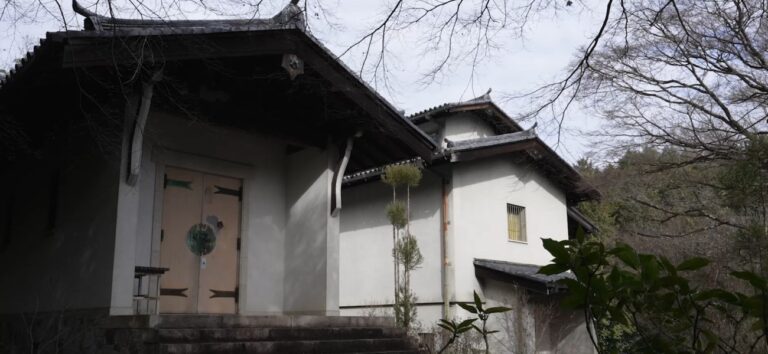
Opening the door to Yomei Bunko: A bespoke experience of Japanese tradition
This tailor-made tour offers an exclusive glimpse into authentic Japanese culture with a special viewing of national treasures, such as The Tale of Genji and Mido Kanpakuki, and accompanying English commentary at Yomei Bunko.
Yomei Bunko is a treasure trove of historical materials that has been maintained for over 1,000 years by the Konoe, a branch of the noble Fujiwara family. For the first time ever, there will be a special lecture on waka poetry and related aspects of Japanese culture by the incoming head of the Konoe family (a presenter for the Imperial New Year's Poetry Reading); a Japanese calligraphy experience; and a special tour of Hoshun-in Temple on the Daitoku-ji Temple grounds (an Important Cultural Property usually closed to the public).
Several other traditional Japanese cultural experience programs are also available, giving you the freedom to customize your own tour. Activities include a tea ceremony, ikebana flower arrangement session, court dance and music performance, kemari (an ancient Japanese sport), and a Kyoto culinary experience. -
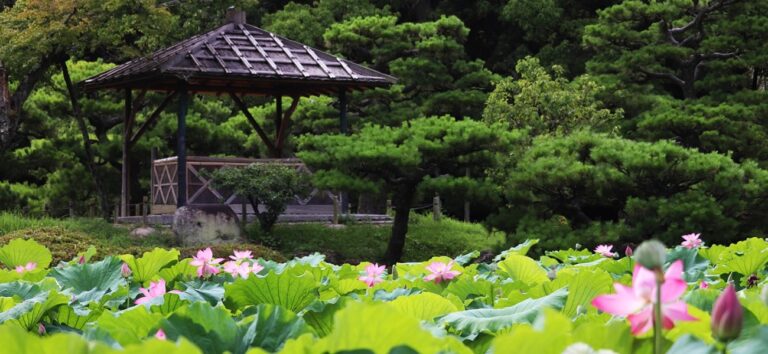
Ritsurin Garden Premium Tea Ceremony
Ritsurin Garden boasts a history of nearly 400 years and is where the Takamatsu Matsudaira family, the samurai lords who ruled this area, entertained various guests. This dinner program recreates the family's unrivaled hospitality. There will be a guided tour of the garden by writer Alex Kerr, who will provide guests with insights into the garden's most famous and historic trees, the natural beauty of Japan exhibited throughout the garden, and the characteristics of Japanese culture from the Edo period onwards. The garden tour will be followed by apéritifs at the historic Kikugetsu-tei Tea House, during which a Living National Treasure lacquerware master artisan will discuss Kagawa lacquerware—a representative traditional craft of Kagawa Prefecture. This will be followed by a cha-kaiseki dinner, the highest form of hospitality within the tea ceremony.
-
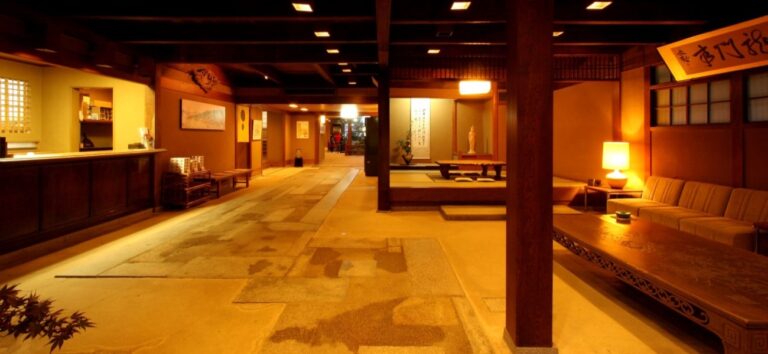
Special Night Admission to Itsukushima Shrine, Bugaku Dance Viewing, and G7 Hiroshima Summit 2023 Attraction Tour
Tour the highlights of Miyajima, an island venerated as sacred since ancient times, accompanied by a local interpreter. Your knowledgeable guide will help you tease out the intricacies of Miyajima’s diverse heritage of faith and Shinto-Buddhist syncretism.
At Akushu Restaurant, our lunch venue, enjoy a luncheon of foods with special connections to the Summit and Hiroshima, prepared specially for our tour.
Iwaso, a long-standing Japanese inn on Miyajima, was the venue for a working dinner during the G7 Hiroshima Summit. The tour will include a visit to the facilities of Iwaso, which is connected with the G7 Hiroshima Summit, and a talk by a staff member about episodes from that time, and the tea ceremony experience will take place at a special place Iwaso too.
You will visit Itsukushima Shrine, and have a general worship session and a tour of the facility.
At Miyajima History and Folklore Museum, you can learn about the history and culture of Miyajima. -
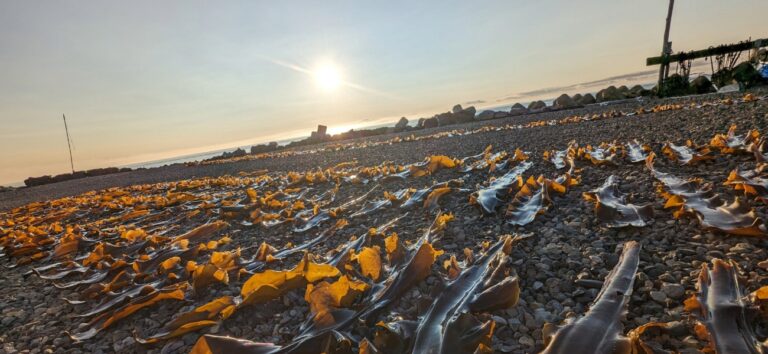
World Natural Heritage Site of Shiretoko: Experience Fishing with Rausu Kelp Fishermen and Learn about Japanese “DASHI” Culture
The setting for this experience is the World Natural Heritage Site of Shiretoko. Rausu Kelp fishermen are traditional Japanese craftsmen, and one of their production sites will be made specially available to those wanting to experience the actual production of Rausu Kelp. Participants can see kelp fishing up close, try their hand at washing and drying kelp, and learn how kelp is made into different sorts of products. Some of the kelp fishermen will be offering tours on their fishing boats to help you get a sneak peek into the underwater world. You can use actual fishing gear to look down into the seabed to see how kelp grows. You can also help make some local dishes and special lunches with the fishermen’s wives. Finally, the tour will take you to the fish market (normally closed to the public) to see all the various types of fish caught in the local area and to watch the fish auction. Enjoy traditional Japanese culture at a deeper level. Seaside Cottage KOBUSTAY will open in February 2025, allowing guests to experience the kelp fisherman’s lifestyle in its entirety.
-
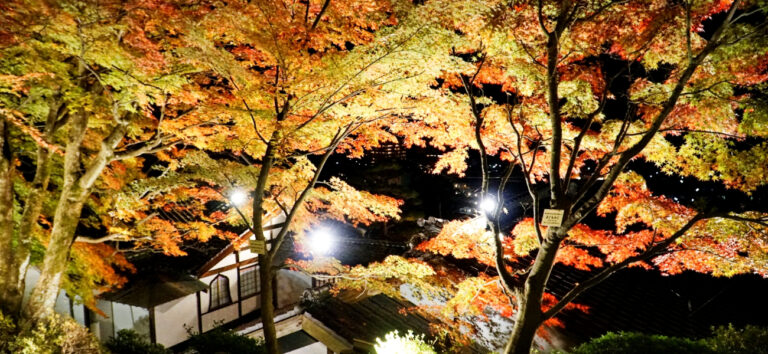
Gero Onsen Special Illuminated Autumn Foliage Tour to Savor Local Cuisine in Historical Buildings
・Gero Onsen Gassho Village will be specially lit up this autumn season.
Enjoy the autumn leaves with gohei-mochi rice cakes, snacks, and sake at Odo House in Gassho Village rented for your exclusive use.
・Go on a private tour of the former Kikusuiso, a building of historic value located within Onsenji Temple at Gero Onsen.
・Immerse yourself in traditional geiko performing arts and the tea ceremony while viewing the illuminated autumn leaves.
・In addition, with the Ryukoukutsu dry landscape garden specially lit up for this event, you can try your hand at zazen meditation in a mystical atmosphere. -
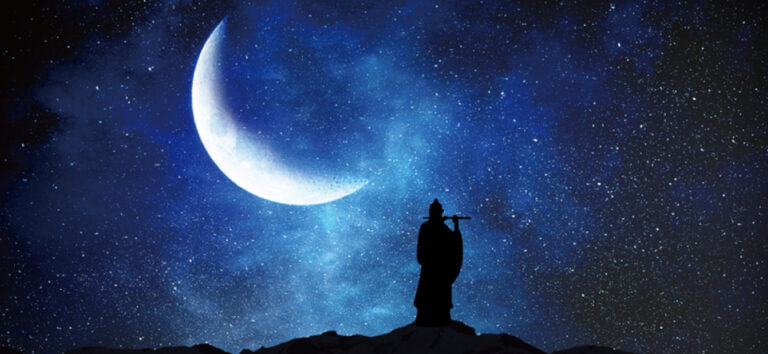
Dinner Show Featuring Gagaku Court Music by Hideki Togi and Japanese Cuisine with an Illuminated Mikazuki Falls
Kusu, Oita Prefecture, will host a special tour based around the theme of “The Legend of Mikazuki Falls,” a Heian-period tale of true love in Kyoto. This tour offers abundant attractions for international tourists seeking to experience what makes Japan unique.
For two days, there will be dinner shows featuring live performances of gagaku ancient court music by Hideki Togi at Arashiyama Taki Shrine during the mid-autumn Harvest Moon, when the full moon shines brightest in the clear night sky. The Togi family have passed down gagaku court music from generation to generation since the Nara period 1,300 years ago. Hideki Togi, who inherited this tradition, has performed at court ceremonies and gagaku concerts held at the Imperial Palace throughout his career. He has also played a large role in promoting traditional Japanese culture and encouraging international goodwill. Sushi Kappo Yamanaka, a famous restaurant frequented by food connoisseurs from all over Japan since its opening in 1972, provides the cuisine for dinner shows. The seafood used for their Hakata sushi is procured from the Genkai Sea and other nearby coastal waters and is carefully selected by the restaurant's owner. The chefs will spare no expense in preparing your meal for this gem of an event. The dinner will also feature local Kusu Rice, which is the same type of rice specially offered to deities at the Daijosai Festival.
This event, featuring Japanese-style lighting of Mikazuki Falls and Arashiyama Taki Shrine, gagaku court music accompaniments by Hideki Togi, and a collaboration with local restaurants in Kusu town, will continue for the next two months.
The beauty of Mikazuki Falls and Arashiyama Taki Shrine, lit up in a quintessential Japanese style, makes for the perfect view to enjoy with the gagaku court music by Hideki Togi in the background, and is sure to be a hit on social media! This event offers a precious opportunity to experience the true depths and beauty of Japanese culture. Centered around luxurious Japanese tradition and history, this special event will make for unforgettable memories. -
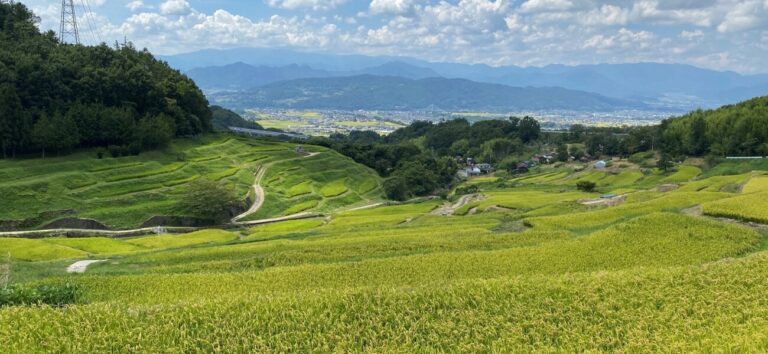
TANADA MORNING
Inagura's rice terraces have captivated many, and have also been selected among the “100 Best Rice Terraces in Japan."
Okazaki Shuzo, a sake brewery in Ueda, Nagano Prefecture that has been brewing high-quality sake for 350 years, tends to these fields. This not only provides the brewery with rice for sake, but also preserves the landscape.
Anyone who works the rice fields knows that the Inagura rice terraces are the most beautiful when bathed in the morning light. Now, visitors will have the chance to take in the sights, sounds, and flavors of this landscape as part of a new type of sake tourism by Okazaki Shuzo: the rice terrace breakfast.
Enjoy a private breakfast among the rice terraces, a landscape formed and perserved by sake brewing, while basking in the morning sun. -

Beginners Adventure Tours
[Course A]
・Spectacular views! Zip downhill on an e-bike from Bihoro Pass overlooking a caldera lake (Lake Kussharo) in Akan-Mashu National Park (electric-assisted bicycle tour)
・Kayak along the Wakoto Peninsula, a place of boiling hot spring water, before coming ashore to experience the volcano in Oyakotsu Jigoku
・Eat a special homemade lunch using locally-produced ingredients on the shore of Lake Kussharo
・There is also an additional mini-cycling tour available, going by e-bike through agricultural, mountain, and fishing villages to Sunayu for a footbath in the hot springs
・Our final destination is Mt. Io, a geopark where you can feel the real pulse of Hokkaido's Tomoshiri
[Course B]
・Start from Omagari Lakeside Park, a field used by inmates of the former Abashiri Prison (the sunflower and cosmos flower gardens are at their best in August and September!)
・Take a leisurely ride on an e-bike along a bike path that uses the old Kushiro Line with Lake Abashiri at its side
・The coral grass with their bright red leaves that bloom in autumn at the brackish Lake Notoro are at their best in September
・Cycle by e-bike in the magnificent rural landscapes overlooking Cape Notoro
・Cross a sea relic lake! Kayak on Lake Notoro, Abashiri Quasi-National Park
・Cycle by e-bike to Cape Notoro Lighthouse while overlooking the Sea of Okhotsk where ice drifts and re-emerges!
・Have lunch at Connectrip, a hands-on facility at Lake Abashiri, where you can bake your own pizza! After stretching out the dough and topping it off with your favorite local ingredients, bake it in the stone oven for your very own stone-baked pizza! -
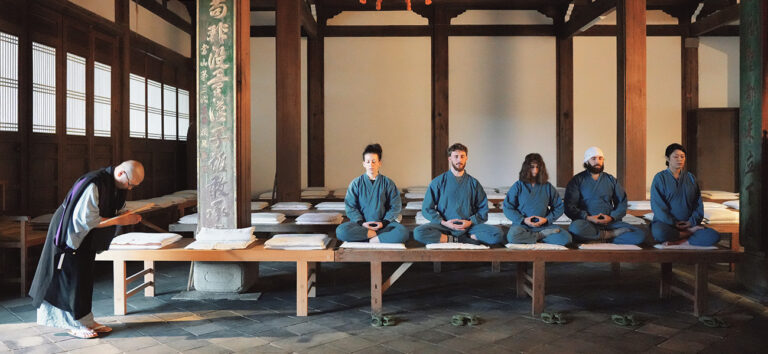
Ascetic Training, Senchado Tea Ceremony, and Fucha Cuisine at Manpukuji Temple
Manpukuji Temple was founded in 1661 by the Chinese monk Ingen Ryuki and is the head temple of the Obaku sect of Zen Buddhism. It is characterized by its Chinese-style architecture, in which its seven halls are arranged in the Ming Dynasty style.
The Daio Hoden Main Hall—the only one made of teak in Japan—the Dharma Lecture Hall, the Kaizando Founder’s Hall, and more, still stand as originally constructed. Highlights of the temple also include its Important Cultural Properties, which consist of twenty-three main buildings, corridors, plaques, and hanging couplets.
You can also experience the Chinese culture of the time through the temple's collection of Buddhist statues, framed inscriptions, paintings on sliding-door panels, and hanging scrolls by Buddhist artists from China.
Zen Master Ingen introduced a great number of things to Japan, many of which are taken for granted today. Such imports include kidney beans, watermelon, lotus root, sencha green tea, bamboo shoots (moso bamboo), chairs, tables, and manuscript paper.
Fucha cuisine, the Chinese version of Japanese Buddhist Shojin vegetarian cuisine, is beautifully presented and tastes divine. It is one of the highlights of the event that allows guests to truly experience Chinese culture.
There are Zen monks at Manpukuji who continue to practice asceticism to this day. These monks devote themselves to their practice through zazen meditation, Zen dialogue, religious services, alms begging, and other daily temple work at the Zen dojo located on the temple grounds. Visitors can deepen their understanding of the history and culture of Manpukuji from a digital guide available in seven languages: Japanese, English, French, Spanish, Korean, and Chinese (simplified and traditional). -
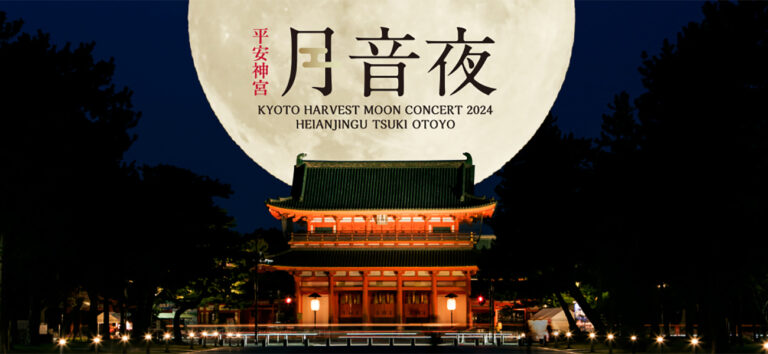
Heian Jingu Tsuki Otoyo: Kyoto Harvest Moon Concert 2024
The Mid-Autumn Festival is a celebration that originated in China to celebrate the fullest and brightest moon of the year. It is now celebrated with great enthusiasm in South Korea, Taiwan, Hong Kong, and many Southeast Asian countries. This year, the festival falls on August 15, as per the lunar calendar. Traditional "moon-viewing parties" will be hosted this October in the modern setting of Kyoto’s Heian-jingu Shrine. The Daigokuden (outer hall of worship) will be lit up in the background for special live performances by talented musicians to embody the elegant and romantic time that is mid-autumn.
■ Dates: October 12 (Sat.) - October 14 (Mon.)
■ Admission: All seats reserved, advance purchase 8,000 yen / 25,000 yen with meals included (scheduled/admission date designated)
■ Performer: October 12 (Sat.): Hiromi Go October 12 (Sun.): Erika Ikuta October 14 (Mon.): NEO PIANO
[Special Gift for Visitors: Original Japanese Sweets]
This tradition of admiring the moon originates in China. There, they serve round mooncakes in the shape of the full moon. The Tsuki Otoyo Kyoto Harvest Moon Concert represents East Asia's shared culture of affection for the moon. Original Japanese sweets will be handed out to all who join in on the festivities.
[Plan with Dinner]
Enjoy an exquisite dinner at Rokusei, a restaurant located near Heian-jingu Shrine. Savor their Kyoto-style kaiseki cuisine which embodies the culinary culture of Kyoto cultivated over its long history.
Time: 5:00 p.m.–6:30 p.m. each day (concert begins at 7:00 p.m.)
Details: Kyoto-style kaiseki cuisine
